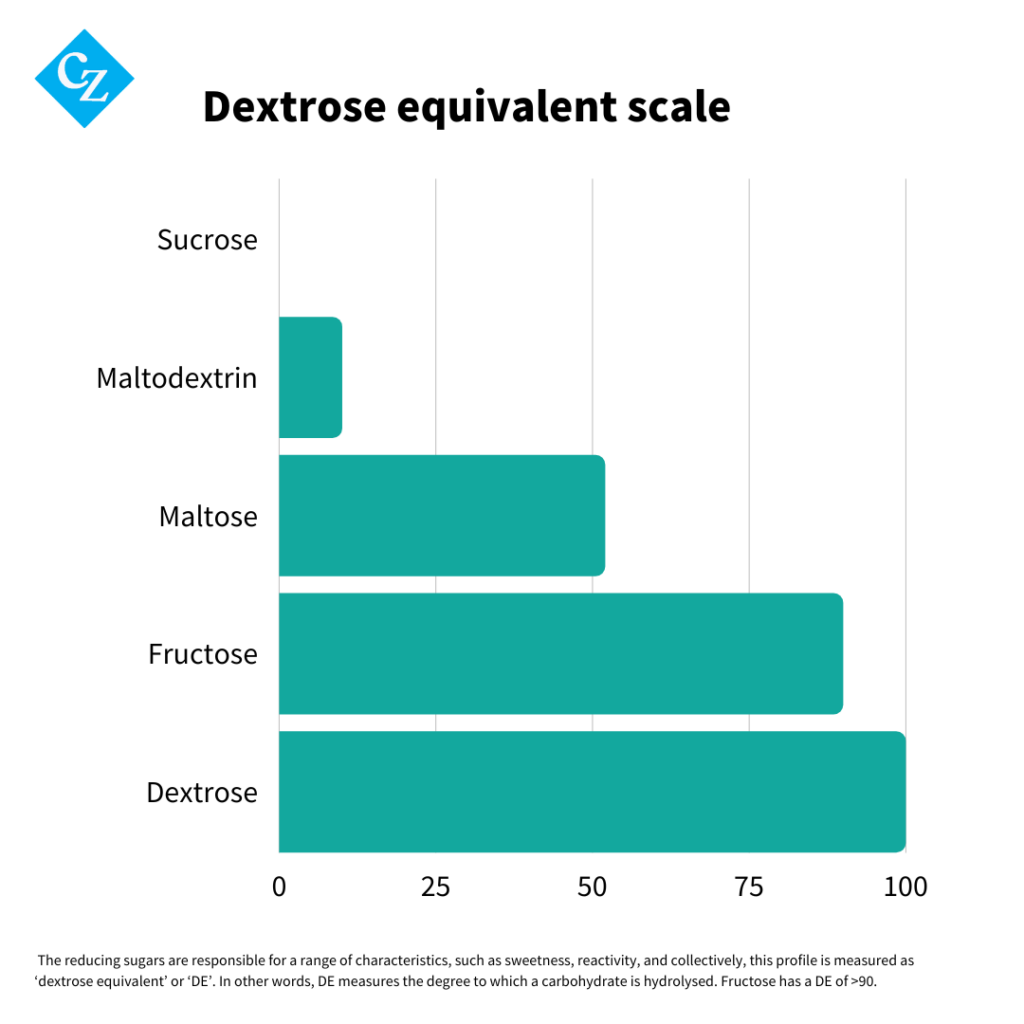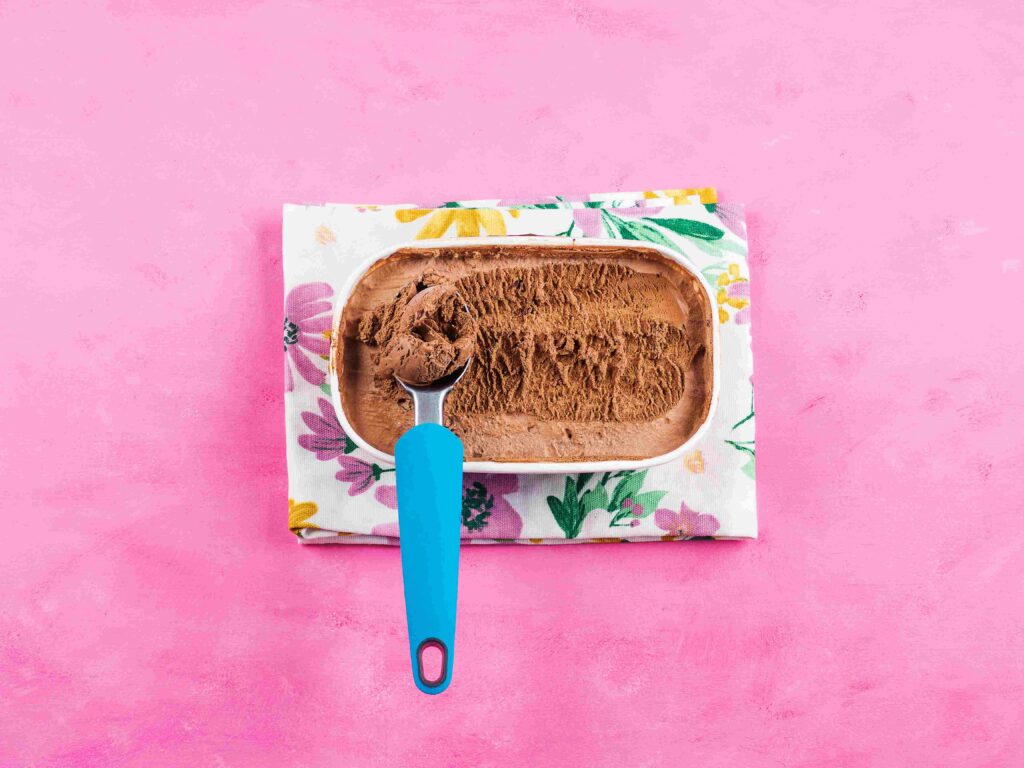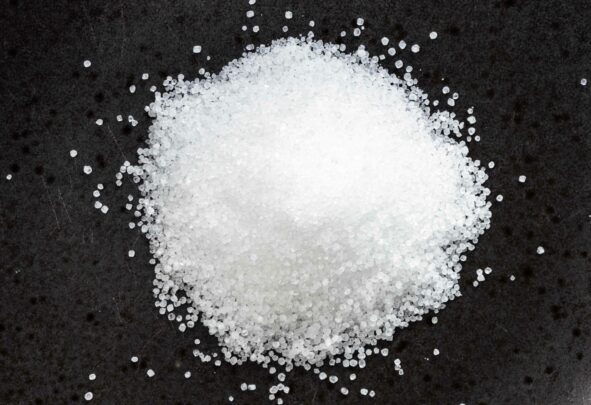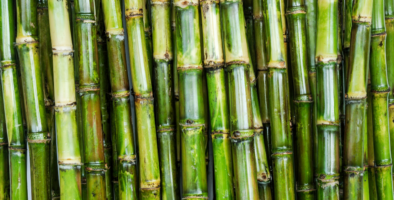Crystalline fructose is a natural sugar and food additive. It is defined as a nutritive sweetener because it contains calories. Fructose is the sweetest naturally occurring sugar and found in fruits, vegetables and honey but can be cheaply produced from sugarcane or corn.
The appearance and molecular composition of crystalline fructose
Fructose is a simple, six-carbon sugar like glucose and even shares the same molecular formula. Fructose can appear as a straight chain but is expressed as two hemiacetal rings containing an alcohol and ketone group, in its crystalline form or in solution because that is a more stable arrangement. Anhydrous (dry) crystalline fructose is a pure, white, odourless solid crystal.
Where crystalline fructose sits on the ‘sweetness scale’
In the production of nutritive sweeteners, the starch chains that form a slurry need to be broken down into shorter sugar units. This results in a profile of shorter (reducing) and longer (non-reducing) sugar units. The reducing sugars are responsible for a range of characteristics, such as sweetness, reactivity. This profile is measured as ‘dextrose equivalent’ or ‘DE’. In other words, DE measures the degree to which a carbohydrate is hydrolysed. Fructose has a DE of >90.

What are the benefits of using crystalline fructose over normal sugar or other sweeteners?
Since it is 1.5 times sweeter than sucrose (table sugar), smaller amounts of crystalline fructose can add lots of flavour to food or drink, it is a choice nutritive sweetener for low calorie products as well as diabetic foods. This also makes crystalline fructose a highly cost-effective sweetener.
How is crystalline fructose made?
Although it is now a widely available, low-cost ingredient, crystalline fructose was originally difficult to produce and for decades fructose was known as ‘the uncrystallisable sugar’. It was challenging to crystallise fructose from an aqueous solution (suspended in water), but a breakthrough was made by adding denatured ethanol to the solution. Fructose crystals are less water soluble in ethanol, meaning its crystals are more stable; and the solution itself is less viscous. The crystals are then recovered by centrifugation, washing and drying.1
However, this method is not preferred for commercial production because all the solvent must be removed from the crystalline substance before consumption, making it a laborious process and more expensive than the method we will now be discussing.
The crystallisation of fructose is improved through a chemical process called ‘seeding’ which is when the pure fructose crystal is added to a supersaturated solution of fructose. This initiates the proliferation of crystals. Seeding is an optimisation technique and requires ideal temperatures and crystal size to yield the best results.
How fructose is extracted from fruits and vegetables
Fructose is a monosaccharide (a single sugar molecule) but in fruits and vegetables, fructose units are bound together to form fructooligosaccharides that are broken down into fructose units. Fructose can be extracted from fruits via membrane ultra-filtration and microwave extraction.
Crystalline fructose vs high fructose corn syrup
Crystalline fructose is almost 100% fructose whereas high fructose corn syrup (HFCS) is 55% fructose and 45% glucose. Plus, HFCS is a liquid and crystalline fructose is a solid.
What is the glycaemic index of crystalline fructose?
Glycaemic index is a ranking of how quickly a carbohydrate affects your blood sugar, where 0 is the lowest and 100 is the highest. A value greater than 70 indicates a high GI food and a value less than 55 is a low GI. The GI of fructose is 23. Low GI foods have the benefit of making you feel fuller for longer because they slowly raise your blood glucose levels i.e., slowly release glucose into your bloodstream. However, having a low GI does not automatically make a product healthy.

Why crystalline fructose is used in food and cosmetics manufacturing
You can easily find crystalline fructose in beverages like sports drinks, yogurt, ice-cream, and other desserts but serving a slightly different purpose in each.
In ice cream, fructose, whether crystalline or in high fructose corn syrup, provides a strong but briefly perceived sweetness that complements fruit and spice flavours. Compared to sucrose, fructose, and dextrose, work better in ice cream because they have a lower molecular weight. This means the ice cream will have a lower freezing point, making for a softer product due to less frozen water in the mix. Elsewhere, fructose is used in baked goods to improve their texture and stability, and to provide a nice browning.
It is common to find fructose used in combination with another sugar like glucose in sports drinks; the 2:1 glucose to fructose ratio is suggested to be the best for sports drinks. Crystalline fructose is also sometimes used to mask the taste of other sweeteners.
Commercial benefits of crystalline fructose
One key commercial benefit of crystalline fructose is its solid form. When shipping liquid products such as liquid glucose and high fructose corn syrup, a significant amount of the weight comes from water, which is inefficient to ship. Since crystalline fructose is solid, 100% of the shipped weight is, in principle, usable for food applications, making it more cost effective, especially where long transits are involved.
Additionally, its similarity to sucrose makes it a useful substitute when sugar prices are high and corn prices are low (given corn is the main feedstock for crystalline fructose).
Why food and beverage manufacturers are using crystalline fructose in 2023
The market scenario in the middle of 2023 is one where sugar is trading at its highest prices in more than a decade, whereas corn prices have crashed following a sharp rise after the start of the conflict in Ukraine. This has pushed procurement teams at a variety of food manufacturers, including beverage makers, brewers, and confectionary producers, to explore alternatives to their sugar purchases. Their initial port of call was high fructose corn syrup but due to the ‘dead freight’ issue involved in shipping a large quantity of water which we mentioned earlier, many are now turning to crystalline fructose as a viable alternative.
Turkey, India and China are large manufacturers and exporters of crystalline fructose, and these countries have seen increased flows of the product over the last few months. Shipment is normally done via containers, with the product packed in polypropylene bags with or without pallets.
Proximity to key export ports is a major strategic advantage for producers, and those able to keep logistics costs to a minimum tend to benefit most from a surge in demand. Equally, access to domestic corn sources and cheap energy prices are a key driver of cost competitiveness – this has proven challenging in recent years; however, the energy prices have reduced recently, and producers are now able to increase their margins.
Need help sourcing and moving crystalline fructose? Contact us
Sources



